Can there be anything more uplifting than walking around a beautiful garden? Now that March has arrived, and the daffodils, magnolias and camellias are bursting into bloom, we’re celebrating the reopening of some of our country’s most glorious gardens in the ‘Year of the English Garden 2016’.
This celebratory year marks the 300th anniversary of influential landscape designer ‘Capability’ Brown, whose arcadian landscapes of majestic lakes, clumps of trees and framed views can be enjoyed in British gardens countrywide.
Yet for me, it increases the enjoyment even further if a garden is associated with an author or poet who has lovingly created, or been inspired by, its borders, paths and vistas. With this in mind, and to mark this celebratory year, we have ‘unearthed’ six of the best writers’ gardens in the south of England – each with their own story to tell.
Need a place to stay?
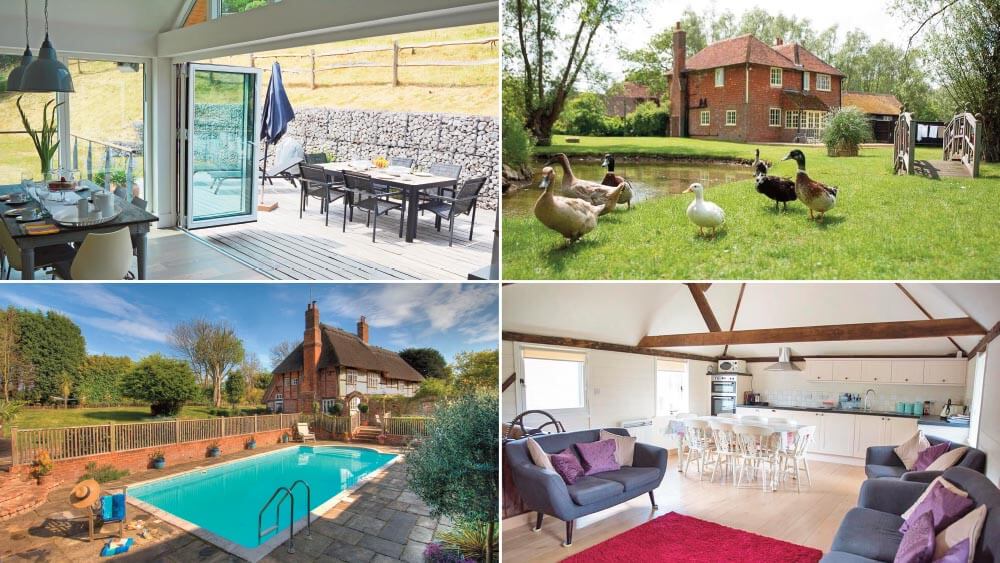
From top left: Brooks Lodge, East Sussex; Larkin Farmhouse, Manor Farmhouse & Larkin Oast, Kent
For the opportunity to enjoy these lovely gardens, why not book one of our holiday cottages in Kent and Sussex nearby?
1 Bateman’s, East Sussex (National Trust)
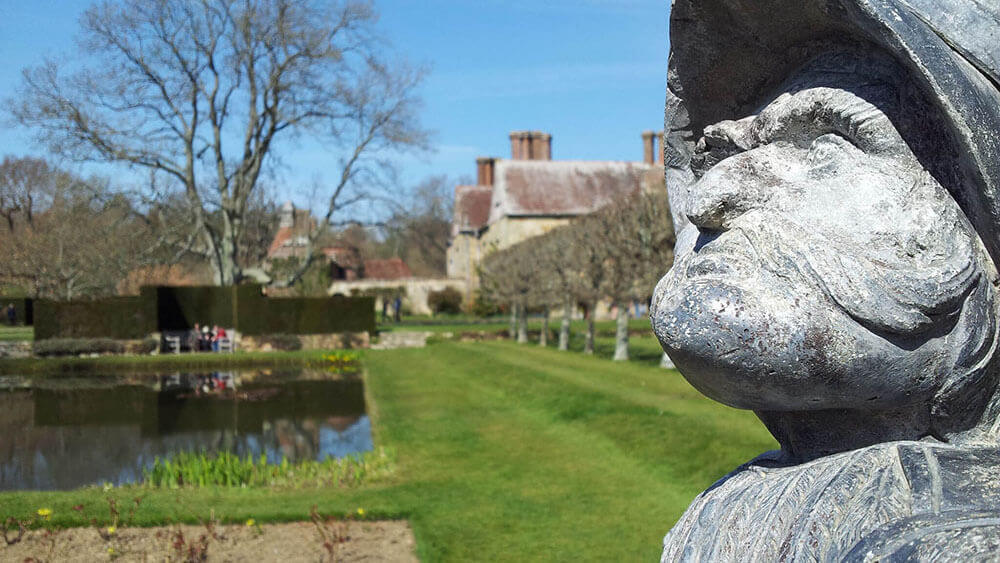
Bateman’s by Nick Allen
Where: Burwash, East Sussex
Opening from: Open all year
Details: Nobel prize-winning writer Rudyard Kipling’s former home, Bateman’s in East Sussex, is in a beautiful spot near the river Dudwell. The creator of the Jungle Books, and the famous poem If, also created much of the garden surrounding the Jacobean house, and converted the watermill to generate electricity. There is a walk down to the river away from the relaxed formality of the pond, rose garden, herb garden, and the wildflowers that grow near the house.
2 Chartwell, Kent (National Trust)
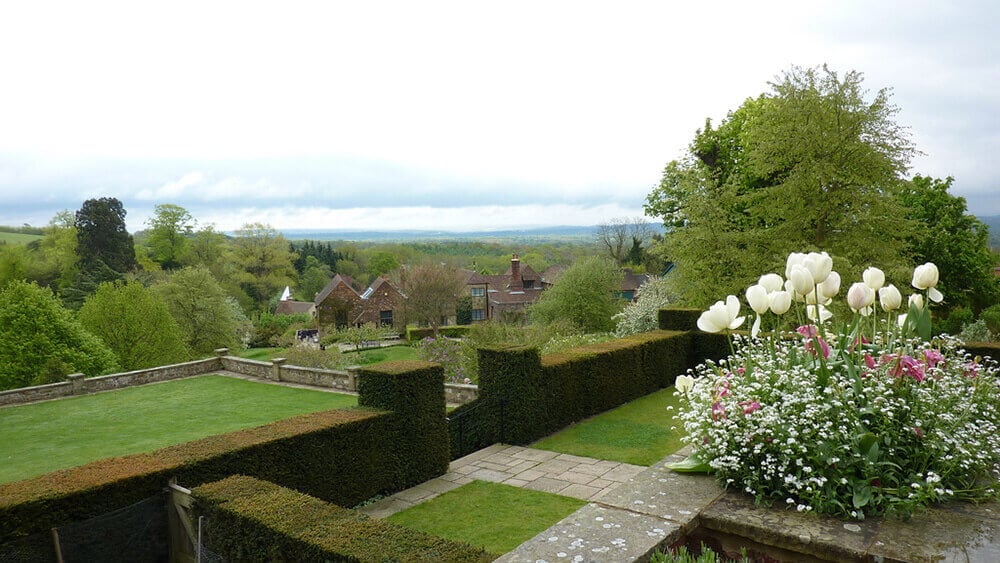
Chartwell by Andrew Bowden
Where: Westerham, Kent
Opening from: Open all year
Details: For 26 years, Winston Churchill loved returning to his home of Chartwell in Kent. The prolific historian and war-time Prime Minister bought the house for its stunning views over the Weald of Kent, and the terraced gardens surrounding the red-brick mansion contain the lakes he dug, the pool where he used to feed his fish, and his garden studio which now displays his watercolour paintings. Other delightful spots include a walled rose garden with hostas and peonies around the perimeter; one wing of the house which is covered by a massive hydrangea; and a vine-covered pergola which leads to the gazebo and viewpoint.
3 Sissinghurst Castle Garden, Kent (National Trust)
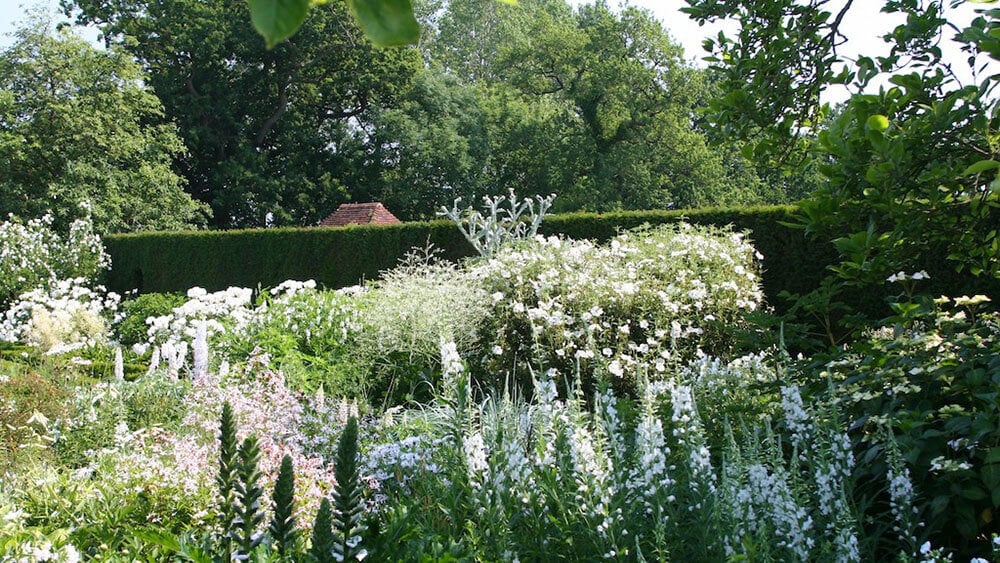
Sissinghurst by Malcolm Manners
Where: near Cranbrook, Kent
Opening from: 12th March 2016
Details: One of the most famous British gardens is tiny Sissinghurst in Kent. Its creator, the author Vita Sackville-West, declared the garden as a ‘Sleeping Beauty’ and ‘crying out for rescue’ when she and husband Sir Harold Nicholson discovered it in the 1930s. They spent many years shaping ‘a profusion, even extravagance and exuberance’ within the garden, while in between she wrote on many subjects: poetry, travel, gardening and fiction, and found time for feminism and a love affair with Virginia Woolf amongst other women. Breaking the mould of formality, flowers spill on to pathways and colour themes are prominent; the most celebrated is the White Garden. There’s also a herb garden, a rose garden, a lime walk, moat walk and, overlooking it all, an Elizabethan red-brick tower from which you can survey the whole garden.
4 Monk’s House, East Sussex (National Trust)
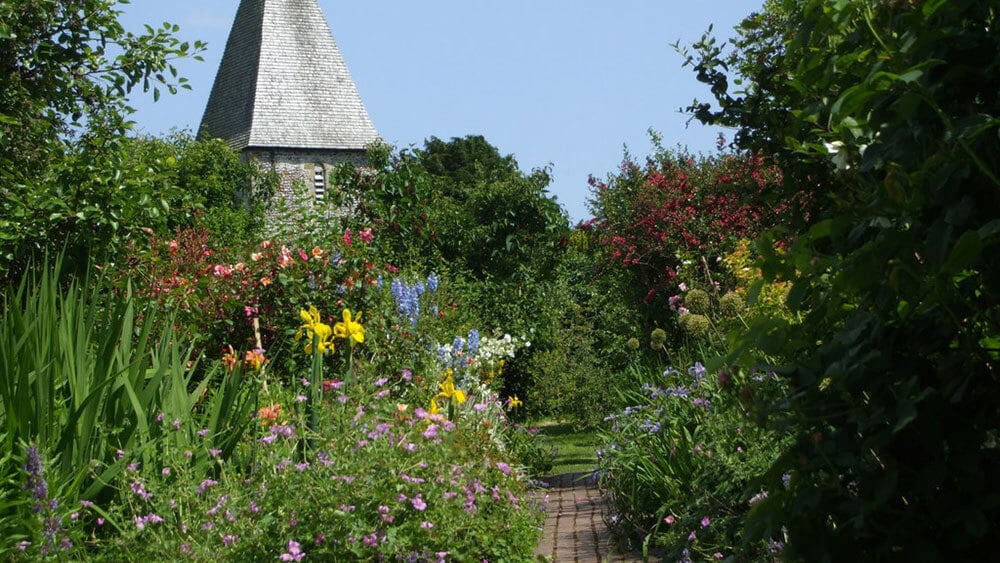
Monk’s House by Nick Macneill
Where: Rodmell, Lewes, East Sussex
Opening from: 23rd March 2016
Details: Virginia Woolf’s country retreat, Monks House, has a beautiful tranquil garden. Her husband, Leonard, was an enthusiastic gardener and the gardens surrounding the house are a mix of lawns, water features, vegetable, flowers, and an orchard. Indeed, it was the garden that persuaded the Woolfs to buy Monk’s House; they were struck by the ‘shape and fertility and wildness’ of the setting. Virginia used the garden for inspiration while writing, and wrote many of her novels in a secluded writing studio at the bottom of the garden. The pair’s ashes are buried in the garden.
5 Charleston, East Sussex
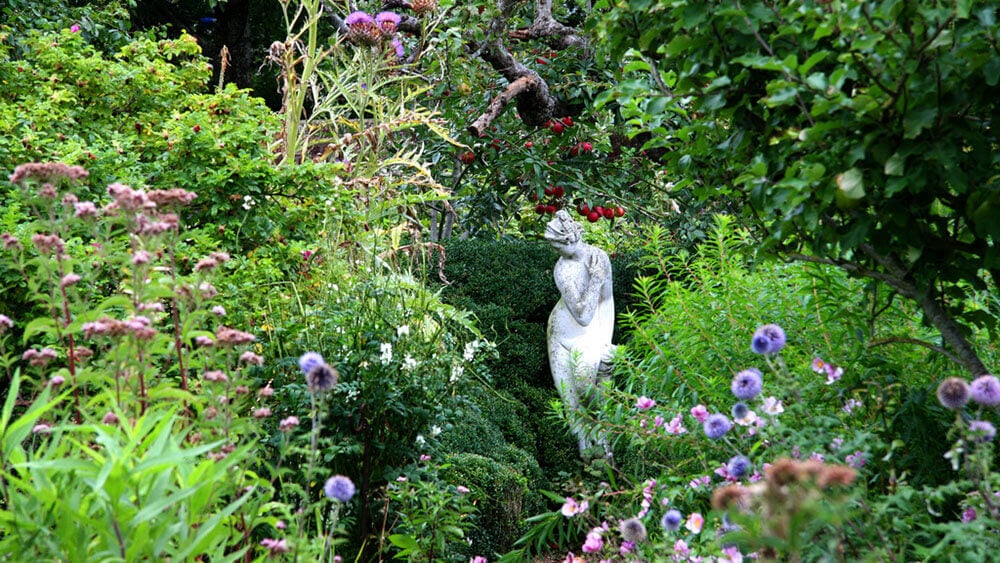
Charleston by Barney Livingstone
Where: Firle, Lewes, East Sussex
Opening from: 23rd March 2016
Details: Charleston, in East Sussex, was where several members of the unconventional literary and artistic Bloomsbury Group lived for some years in the early part of the 20th century. Virginia Woolf, co-founder with her husband Leonard of the Hogarth Press and author of novels such as Orlando, moved into the house with the rest of the group to philosophise about life and pursue the enjoyment of beautiful things. They decorated many of the surfaces in the house, and extended their inventiveness into the walled garden with humorous statues amongst the southern-European-styled gravel paths, ponds and mosaics.
6 Great Dixter, East Sussex
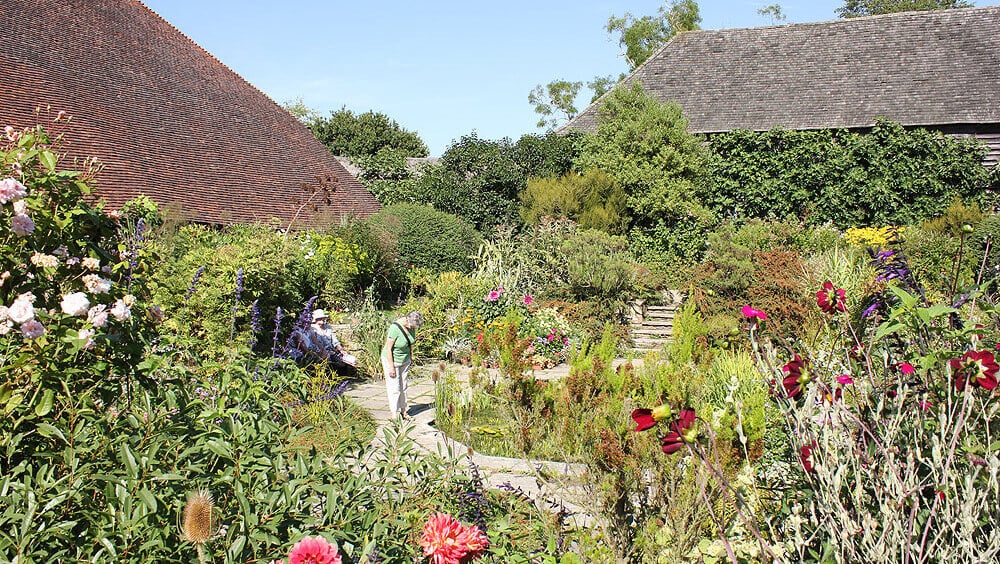
Great Dixter by Rictor Norton & David Allen
Where: Northiam, East Sussex
Opening from: 25th March 2016
Details: Some people don’t just enjoy their garden, their whole lives are in gardening: they live and breathe, and write about, gardens. Great Dixter, in East Sussex, is the creation of Christopher Lloyd, a gardening writer whose mission in life was to coax new and exciting effects out of all sorts of plants. He lived in a restored 15th-century house and the atmospheric gardens are a joy all year round, with big displays of naturalised bulbs in spring; clipped topiary, wild meadow flowers and fine mixed borders in summer; and, best in autumn, the luxuriant exotic garden. Now under the stewardship of Fergus Garrett and the Great Dixter Charitable Trust, Great Dixter is an historic house, a garden, a centre of education, and a place of pilgrimage for horticulturists from across the world.
Published on Thursday 10th March 2016 by Linnie Clements


Follow us on social media